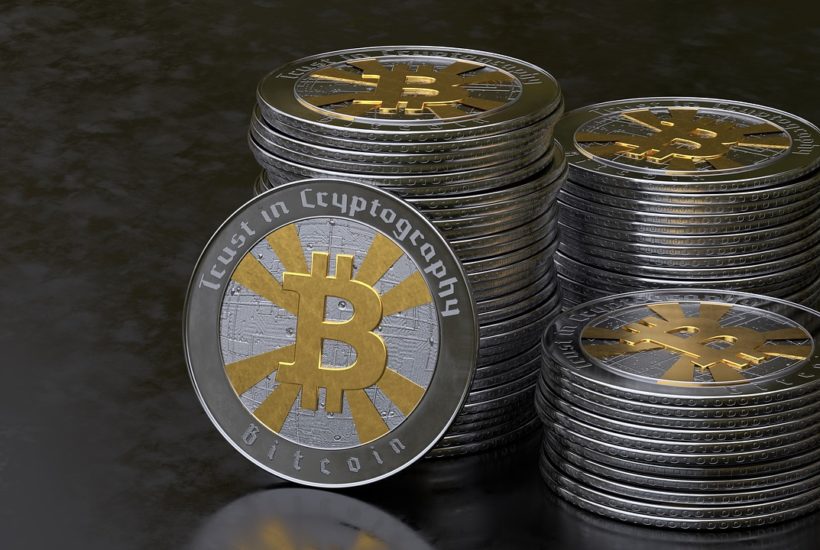Crypto
$25 million in BTC and Ethereum were stolen from dForce
According to DeFi Pulse, the Ethereum DeFi heavyweight was hacked last Saturday night. The protocol lost 99% of its deposits when $25 million in Ethereum and Bitcoin were stolen from its wallets. Other developers of DeFi protocols speculated that the attack was caused by “imBTC”. This is an Ethereum Token, which is coupled 1:1 to Bitcoin. The site is no longer available, as a precautionary measure

DeFi (Decentralized Finance) is or will be one of the most discussed topics for 2020. This refers to the development of applications from the classic financial sector, such as lending, sending and investing money, with the difference that these are to be decentralized. Just how great the need for this is, it is shown by the fact that billions of people worldwide do not have access to a functioning financial system, but would urgently need one.
Banks as intermediaries could also be eliminated. That is why some people assume that DeFi “could be the next big thing.” However, despite this euphoria, one has to admit that this trend is still in its infancy and a lot of development work is still needed. That is also shown by the recent hack of the DeFi application “Lendf” from dForce, when $25 million in Ethereum and Bitcoin were stolen.
Born2Invest mobile application is bringing all the crypto and financial news from trusted sources to a single screen so you can stay on top of the market. The application is aggregating the most important and breaking news from relevant websites, the list is always revised and updated with new resources.
Ethereum DeFi Hack makes $25 million disappear
Lendf.me is one of two protocols developed by the dForce Foundation. According to the Twitter page of Lendf, it is “by far the largest fiat-backed Stablecoin DeFi rental protocol.” According to DeFi Pulse, the Ethereum DeFi heavyweight was hacked last Saturday night. The protocol lost 99% of its deposits when $25 million in ethereum and Bitcoin were stolen from its wallets.
“Lendf.me confirmed that it was attacked at block level 9899681 on Sunday at 8:45 Beijing time,” Lendf.me told Chinese media company Chain News.
Other developers of DeFi protocols speculated that the attack was caused by “imBTC”. This is an Ethereum Token, which is coupled 1:1 to Bitcoin. This was used as security and could have been proven fraudulent, allowing the attacker to withdraw funds almost for free.
Protocol website not available
The investigations of those responsible have not yet been completed. According to dForce Foundation CEO Mindao Yang, “the team is still” investigating the incident. He calls on users not to include Ethereum and Co. in the protocol.
On the website of the Ethereum Protocol, Lendf.me also posted the following: “Do not make any more deposits!” Meanwhile, the site is no longer accessible, although this may be a security measure to ensure that no more money is lost.
Just last week, the dForce Foundation completed a strategic round of $1.5 million led by Multicoin Capital and supported by Huobi Capital and the Chinese bank CMB International (CMBI). Huobi itself is one of the largest crypto companies, while CMBI is the investment arm of one of China’s largest banks.
However, Multicoin Capital’s investment made headlines because of the company’s strong support. Its director, Mable Jiang, said: “dForce is building the first” super network “of DeFi protocols.”
The funds were earmarked for staff increases and the introduction of new DeFi products next year.
As unfortunate as it is that Lendf and the dForce Foundation, as a DeFi project on Ethereum, suffered a bitter, perhaps final blow with the attack, the hack once again impressively demonstrates the importance of personal responsibility in the crypto sector.
__
(Featured image by MasterTux via Pixabay)
DISCLAIMER: This article was written by a third party contributor and does not reflect the opinion of Born2Invest, its management, staff or its associates. Please review our disclaimer for more information.
This article may include forward-looking statements. These forward-looking statements generally are identified by the words “believe,” “project,” “estimate,” “become,” “plan,” “will,” and similar expressions. These forward-looking statements involve known and unknown risks as well as uncertainties, including those discussed in the following cautionary statements and elsewhere in this article and on this site. Although the Company may believe that its expectations are based on reasonable assumptions, the actual results that the Company may achieve may differ materially from any forward-looking statements, which reflect the opinions of the management of the Company only as of the date hereof. Additionally, please make sure to read these important disclosures.
First published in CRYPTO MONDAY, a third-party contributor translated and adapted the article from the original. In case of discrepancy, the original will prevail.
Although we made reasonable efforts to provide accurate translations, some parts may be incorrect. Born2Invest assumes no responsibility for errors, omissions or ambiguities in the translations provided on this website. Any person or entity relying on translated content does so at their own risk. Born2Invest is not responsible for losses caused by such reliance on the accuracy or reliability of translated information. If you wish to report an error or inaccuracy in the translation, we encourage you to contact us.

-

 Crypto1 week ago
Crypto1 week agoRipple in 2025: Legal Victory, RLUSD Growth, and XRP’s Uncertain Future
-

 Crypto2 weeks ago
Crypto2 weeks agoCrypto Markets Slide as Bitcoin Breaks $90K, Year-End Pessimism Grows
-

 Crowdfunding18 hours ago
Crowdfunding18 hours agoCrowdfunding Grants Open for Business Projects Until January 2026
-

 Impact Investing2 weeks ago
Impact Investing2 weeks agoTreeblock Showcases Sustainability Solutions at ADIPEC Abu Dhabi






















